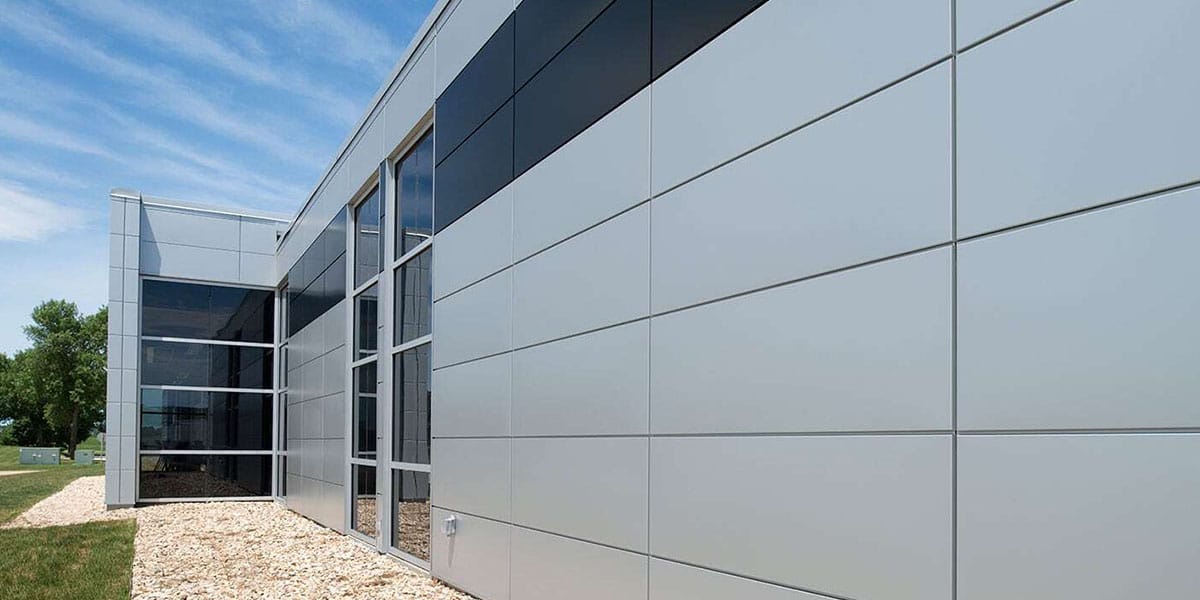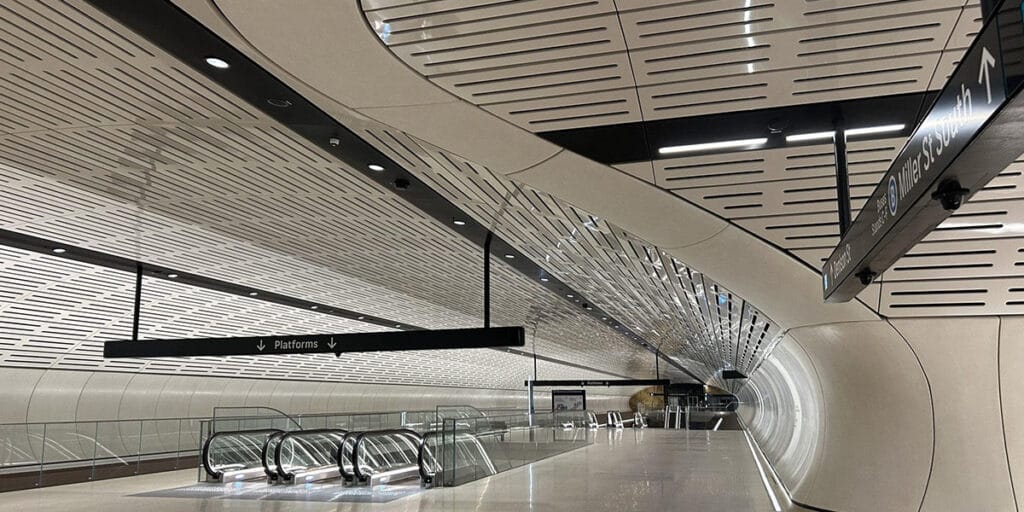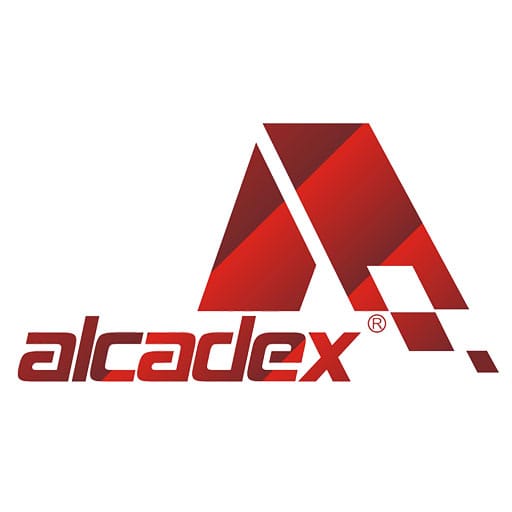
23 Mar What is Non-Combustible Aluminum Cladding and Why It Matters in Construction
Table of Contents
Non-combustible aluminium cladding is a fire-resistant solution specifically engineered to improve building safety. Composed of aluminium layers fused to a mineral core, it effectively prevents the spread of flames. This advanced material is essential in contemporary construction, significantly reducing fire hazards and protecting lives.
Data indicates that 3% of structural fires originate from exterior walls, accounting for 8% of property damage. In low-rise buildings, 79% of exterior wall fires occur due to the absence of proper fire-resistant materials. Non-combustible aluminium cladding mitigates these risks, ensuring adherence to strict fire safety regulations while safeguarding both structures and their occupants.
What Makes Non-Combustible Aluminum Cladding Fire-Resistant?

The Role of Aluminum in Fire Resistance
Aluminum plays a vital role in the fire resistance of cladding systems. Its non-combustible nature ensures that it does not ignite or contribute to the spread of flames. This property is critical in non-combustible construction, where fire safety is a top priority. Additionally, aluminum has a high melting point of approximately 660°C (1220°F), allowing it to maintain structural integrity under intense heat. Unlike some materials, aluminum does not emit toxic fumes during a fire, reducing risks for occupants in enclosed spaces.
| Property | Description |
|---|---|
| Non-Combustible Nature | Aluminum does not burn, helping to contain fires and prevent their spread. |
| High Melting Point | With a melting point of approximately 660°C (1220°F), aluminum remains intact under high heat. |
| No Toxic Fume Emission | Aluminum does not emit toxic fumes during a fire, reducing hazards in enclosed spaces. |
These characteristics make aluminum a reliable choice for fire-resistant aluminum cladding, ensuring safety and durability in modern construction.
The Non-Combustible Mineral Core
The mineral core in non-combustible aluminum cladding enhances its fire resistance capabilities. This core is typically made from materials like calcium silicate or magnesium hydroxide, which are inherently non-combustible. These materials act as a barrier, preventing flames from penetrating the cladding. They also resist heat transfer, protecting the building’s internal structure.
In non-combustible construction, the mineral core works in tandem with the aluminum layers to create a robust defense against fire. This combination ensures that the cladding systems meet stringent fire safety standards while providing long-lasting performance.
Fire Safety Standards and Certifications
Non-combustible aluminum cladding must comply with rigorous fire safety standards to ensure its effectiveness. Certifications such as EN 13501-1 in Europe or ASTM E84 in the United States evaluate the material’s fire resistance capabilities. These standards assess factors like flame spread, smoke production, and heat release.
Manufacturers of aluminum cladding systems must undergo extensive testing to achieve these certifications. Compliance with fire safety standards guarantees that the cladding performs as intended during a fire. Builders and architects should prioritize certified materials to ensure adherence to local building codes and enhance overall safety.
Benefits of Non-Combustible Aluminum Cladding in Construction
Fire Safety and Protection
Non-combustible aluminum cladding offers a fire-safe solution for modern construction. Its fire resistance capabilities stem from its aluminum layers and a mineral core, both of which are non-combustible. Unlike traditional materials, aluminum does not ignite or contribute to fire spread. It withstands high temperatures, maintaining structural integrity and delaying fire progression. This makes it a reliable choice for non-combustible construction, especially in high-risk areas.
Modern fire-resistant aluminum cladding incorporates cores made from mineral compounds like calcium silicate. These materials act as barriers, preventing flames from penetrating the cladding. Additionally, non-combustible wall coverings comply with stringent fire safety standards, ensuring maximum protection for buildings and occupants. By minimizing fire risks, this cladding safeguards lives and property, making it an essential component in the construction industry.
Durability and Weather Resistance
Non-combustible aluminum cladding excels in durability, even under extreme weather conditions. Aluminum naturally forms a protective oxide coating, making it resistant to corrosion. This ensures that aluminum cladding systems remain structurally sound over time. Unlike other materials, aluminum composite panels require minimal maintenance, reducing long-term costs.
- Aluminum cladding withstands scorching heat, freezing temperatures, and heavy rainfall without deteriorating.
- Its resistance to UV exposure prevents fading, ensuring a consistent appearance.
- Frequent painting or sealing is unnecessary, making it a hassle-free option for builders.
These features make non-combustible aluminum cladding a practical choice for sustainable and long-lasting construction.
Aesthetic and Design Flexibility
Non-combustible aluminum cladding combines safety with aesthetic appeal, offering endless design possibilities. Clean lines and smooth surfaces allow architects to create modern, visually striking facades. Reflective properties enhance natural light interaction, adding depth and dimension to buildings. This material suits both residential and commercial applications, providing dramatic visual appeal.
Architectural aluminum composite panels, such as AlFacade®, offer over 200 color and pattern options. These panels cater to diverse architectural styles while maintaining durability and fire resistance. With a 20-year warranty, they ensure long-lasting performance, making them a preferred choice in the construction industry. By blending functionality with design flexibility, non-combustible cladding elevates the standards of modern architecture.
Contribution to Sustainable Building Practices
Non-combustible aluminum cladding plays a significant role in promoting sustainable building practices. Its durability reduces the need for frequent replacements, minimizing waste generation. Aluminum cladding systems are often recyclable, making them an eco-friendly choice for modern construction. Recycling aluminum requires only 5% of the energy used to produce new aluminum, which significantly lowers the environmental impact.
Sustainability in construction depends on materials that balance performance and environmental responsibility. Non-combustible construction materials like aluminum cladding systems meet this requirement effectively.
The lightweight nature of aluminum cladding systems reduces the energy required for transportation and installation. This feature contributes to lower carbon emissions during the construction process. Additionally, non-combustible cladding systems often incorporate mineral cores made from natural, non-toxic materials. These cores enhance fire resistance while maintaining environmental safety.
Sustainable building practices also emphasize energy efficiency. Non-combustible aluminum cladding improves thermal insulation, reducing the need for excessive heating or cooling. This leads to lower energy consumption and decreased greenhouse gas emissions.
Builders and architects increasingly prioritize non-combustible construction materials to meet green building certifications. Aluminum cladding systems align with these goals by offering a combination of fire safety, durability, and environmental benefits. By choosing non-combustible cladding, construction projects can achieve long-term sustainability while ensuring safety and performance.
Applications of Non-Combustible Aluminum Cladding

Residential Construction
Non-combustible aluminum cladding has become a preferred choice in residential construction due to its fire-resistant properties. High-rise building construction, such as apartments and multi-family homes, benefits significantly from this material. It ensures compliance with fire performance criteria while enhancing occupant safety.
| Application Type | Description |
|---|---|
| Residential Buildings | High-rise apartments and multi-family homes benefit from the fire-resistant properties of aluminum cladding. |
The lightweight nature of aluminum cladding panels simplifies installation, reducing construction time and costs. Its durability and weather resistance make it ideal for long-term use in residential settings. Additionally, the aesthetic flexibility of aluminum cladding systems allows architects to design visually appealing facades without compromising safety.
Commercial and Industrial Buildings
Commercial and industrial buildings often require materials that meet stringent fire safety standards. Non-combustible construction materials like aluminum cladding systems provide the necessary protection. These systems resist high temperatures, ensuring the structural integrity of fire-resistant buildings.
In industrial settings, fire-safe ACM panels minimize the risk of fire spread, safeguarding valuable equipment and inventory. Commercial buildings benefit from the material’s durability and low maintenance requirements. Aluminum cladding systems also improve energy efficiency by enhancing insulation, which reduces heating and cooling costs. This makes them a practical and sustainable choice for large-scale projects.
High-Risk and Fire-Prone Areas
Non-combustible aluminum cladding is essential for buildings in high-risk and fire-prone areas. Its non-combustible nature prevents ignition and the spread of flames, offering critical protection. The material withstands high temperatures without burning and emits no toxic fumes during a fire, ensuring safety in enclosed spaces.
- Aluminum withstands high temperatures without burning.
- Non-combustible properties prevent ignition and fire spread.
- Forms a protective oxide layer when exposed to heat, shielding against flames.
- Complies with modern fire safety regulations, minimizing risks.
These features make aluminum cladding panels indispensable for non-combustible construction in urban areas and regions prone to wildfires. By meeting fire performance criteria, they protect lives and property while ensuring compliance with safety standards.
Retrofitting Older Structures
Retrofitting older structures with non-combustible construction materials enhances safety and extends their lifespan. Many older buildings lack modern fire-resistant features, making them vulnerable to fire hazards. Non-combustible aluminum cladding systems provide an effective solution for upgrading these structures while maintaining their architectural integrity.
Older buildings often face challenges such as outdated materials, structural wear, and non-compliance with current fire safety standards. Aluminum cladding systems address these issues by offering a lightweight yet durable option. Their installation does not add excessive weight to the building, reducing the risk of structural strain. Additionally, the fire-resistant properties of these systems ensure compliance with modern safety regulations.
Tip: Retrofitting with non-combustible materials can also increase property value by improving safety and aesthetics.
The versatility of aluminum cladding allows it to adapt to various architectural styles. This makes it suitable for preserving the historical appearance of older buildings while upgrading their safety features. Its weather-resistant nature ensures long-term performance, even in harsh environmental conditions. Furthermore, the recyclable nature of aluminum aligns with sustainable building practices, making it an eco-friendly choice for retrofitting projects.
Non-combustible construction materials like aluminum cladding systems play a crucial role in modernizing older buildings. They enhance fire safety, improve durability, and contribute to sustainability. By retrofitting with these materials, property owners can protect their investments and ensure compliance with current building codes.
Choosing Reliable Non-Combustible Aluminum Cladding
Understanding Testing and Certifications
Testing and certifications play a critical role in ensuring the reliability of non-combustible aluminum cladding. These evaluations confirm the material’s fire resistance and compliance with safety standards. Two key testing methods include ASTM E119 and NFPA 285.
| Testing Method | Description |
|---|---|
| ASTM E119 | Evaluates fire resistance by exposing materials to a standard time-temperature fire curve. |
| NFPA 285 | Assesses flame spread characteristics of wall assemblies, focusing on limiting temperature rise. |
These tests measure factors such as flame spread, heat transmission, and structural integrity under fire conditions. Builders and architects should prioritize materials that meet these rigorous standards to ensure safety and compliance with local building codes.
Key Features of High-Quality Cladding
High-quality non-combustible cladding offers several essential features that enhance its performance and reliability. These include:
- High Melting Point: Aluminum remains intact during fires due to its melting point of approximately 660°C (1220°F).
- Non-Combustible Nature: The material does not burn, helping to contain fires and prevent their spread.
- No Toxic Fume Emission: It does not release harmful fumes during a fire, ensuring occupant safety.
Additionally, high-quality cladding provides:
- Enhanced Fire Safety: It minimizes fire risks, protecting lives and property.
- Durability and Longevity: Resistance to corrosion and wear ensures a long service life.
- Aesthetic Versatility: A wide range of finishes allows for creative architectural designs without compromising safety.
These features make it a reliable choice for modern construction projects.
Manufacturer Reputation and Warranty
Selecting a reputable manufacturer is crucial when choosing non-combustible aluminum cladding. Established manufacturers often provide materials that meet stringent safety standards and undergo rigorous testing. A strong reputation indicates consistent quality and reliability.
Builders should also consider the warranty offered by the manufacturer. A comprehensive warranty reflects the company’s confidence in its product and ensures long-term performance. For example, warranties covering up to 20 years provide peace of mind and protect investments.
Tip: Always verify the manufacturer’s certifications and customer reviews to ensure the cladding meets both safety and quality expectations.
Ensuring Compliance with Local Building Codes
Ensuring compliance with local building codes is a critical step in construction projects. These codes establish safety, structural, and fire-resistance standards that all materials, including cladding, must meet. Builders and architects must familiarize themselves with the specific regulations in their region to avoid costly delays or penalties.
Local building codes often specify fire performance criteria for exterior wall systems. Non-combustible aluminum cladding must meet these criteria to ensure its suitability for use. For example, some codes require materials to pass tests like ASTM E119 or NFPA 285, which evaluate fire resistance and flame spread. Builders should verify that the selected cladding has undergone these tests and received proper certifications.
Collaboration with local authorities can streamline the compliance process. Builders should submit detailed plans and material specifications for approval before starting construction. This step ensures that the project aligns with local regulations. Regular inspections during construction also help confirm adherence to safety standards.
Tip: Builders should maintain clear documentation of all certifications and test results for the materials used. This documentation can serve as proof of compliance if questions arise during inspections.
Staying updated on changes to building codes is equally important. Regulations evolve to address new safety concerns and advancements in construction materials. Builders and architects should review updates regularly to ensure ongoing compliance. By prioritizing adherence to local building codes, construction projects can achieve both safety and legal approval.
Non-combustible aluminum cladding stands out as a fire safe solution in modern construction. Its fire-resistant properties, including a high melting point and non-combustible mineral cores, ensure enhanced safety by minimizing fire spread and smoke production. This material also offers durability, aesthetic versatility, and compliance with stringent fire safety standards, making it a reliable choice for both residential and commercial projects.
Selecting certified non-combustible wall coverings and aluminum composite panels ensures adherence to fire safety standards while maintaining structural integrity. Builders should prioritize non-combustible subframing and materials to meet regulations and protect occupants. By choosing reliable cladding systems, construction projects can achieve safety, sustainability, and long-term performance.
Tip: Always verify certifications and collaborate with fire safety experts to ensure compliance and peace of mind.


